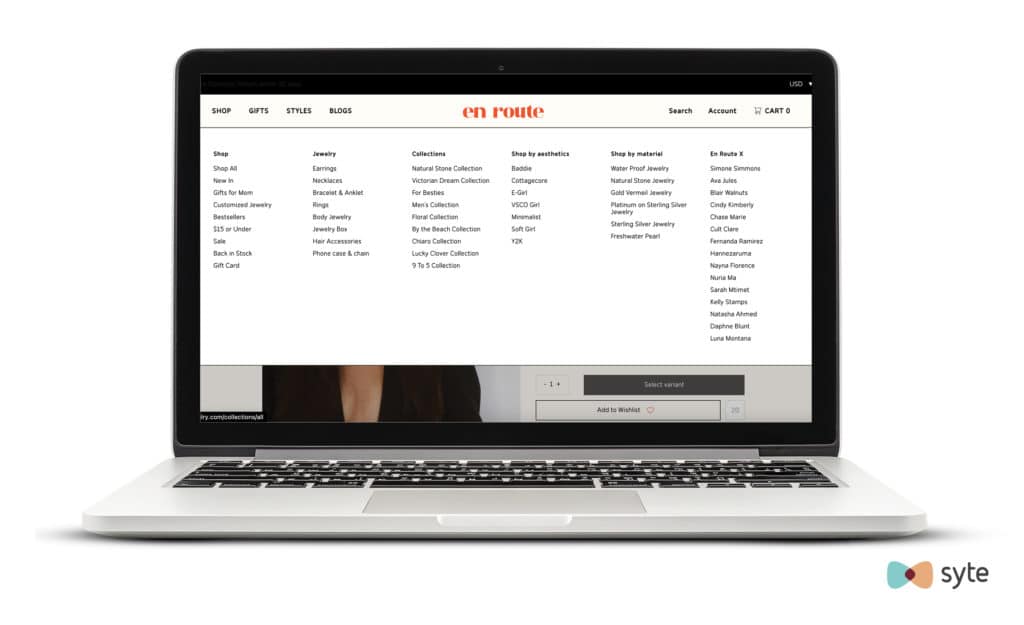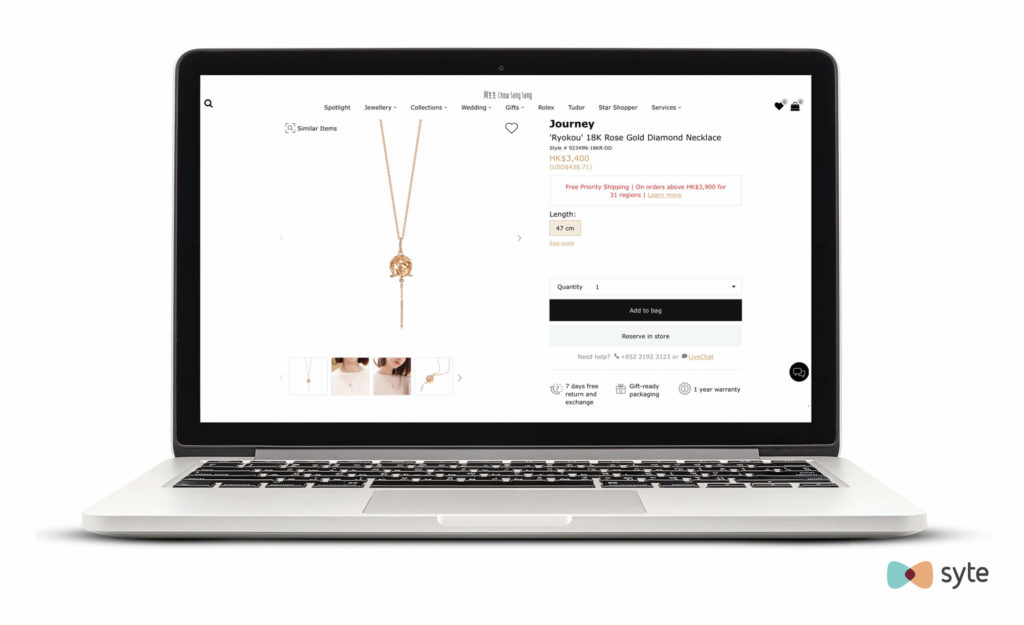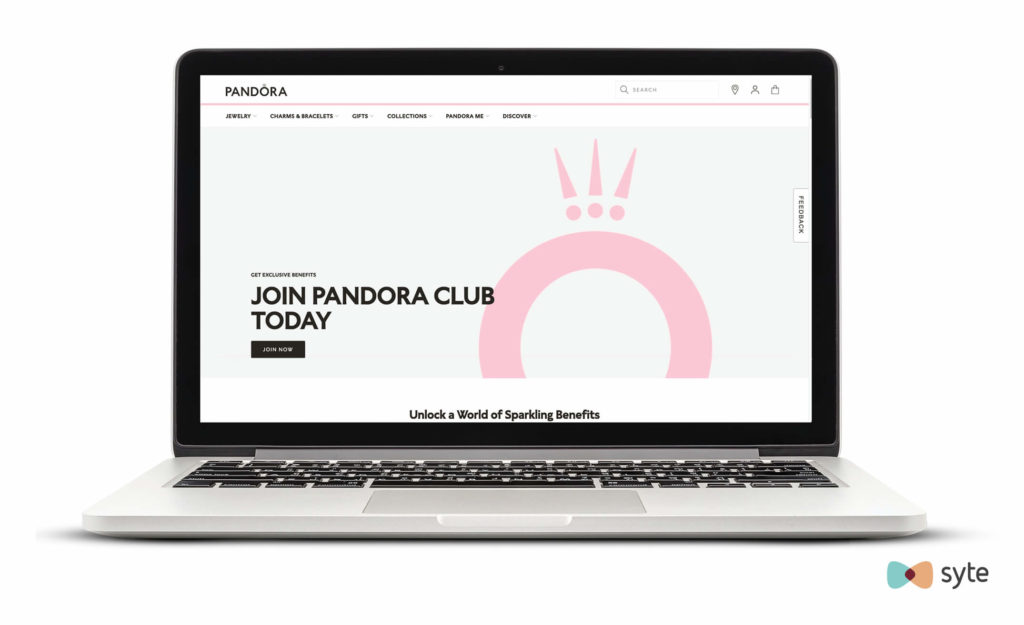100,000 years ago off the coast of Spain, mankind crafted the first-ever beads out of Nassarius shells – and we haven’t stopped since. Jewelry has been a part of our existence since time immemorial and will continue to be for years to come.
Throughout the ages, jewelry has been a prime signifier of everything from social status and religious affiliation to emotional bonds between partners and loved ones. This still rings true today, although we’ve come a long way in how we craft and consume jewelry. We’ve made leaps from ostrich eggshells to precisely cut diamonds and brick-and-mortar shops to online stores.
In an increasingly digital climate, the eCommerce world surrounding jewelry and customer experience has become all the more important. In 2020, the value of the global jewelry market hit $230 billion and is projected to increase to around $307 billion in 2026. Between 2020 and 2027, the jewelry industry is expected to reach a compound annual growth rate of 3.7%, according to Fortune Business Insights.
With the growing use of technology and digital platforms, we can expect steady demand for jewelry in the market. Oberlo anticipates that the online jewelry market will jump by 1.36% in 2022, which translates to $7.7 billion in sales. What’s more, the price points of branded items will be six times higher than unbranded ones, according to The Business of Fashion.
In this guide, we’ll illuminate why eCommerce matters for jewelry companies and discuss 13 important pointers for scaling your online business to benefit your brand and customers.
Why eCommerce is a Key Channel for Jewelry Brands
The fine jewelry market is unlike most verticals in that purchases are not impulsive, but well thought-out. The move to eCommerce was boosted several years ago when major retailers realized the unlimited potential of reaching consumers worldwide through eCommerce, as well as the increase of brands going direct to consumer (D2C).
While the majority of jewelry sales have traditionally taken place offline, the COVID-19 pandemic made this transformation crucial and fueled purchases in the eCommerce realm. As a result, more retailers and brands – both big and small and on a national and international scale – decided to invest in, update, and upgrade their eCommerce operations. In 2020 alone, the jewelry industry witnessed a 57% rise in the number of fine jewelry pieces purchased online.
Several leading brands have successfully created a beneficial synergy between their physical stores and eCommerce, which has resulted in increased sales and loyalty. Through an omnichannel approach, eCommerce can reach more global customers who are becoming more reliant on their connected devices. It also has more bandwidth in terms of product inventory, as retailers deal with web pages instead of shelves.
Physical stores provide tailored customer service experiences, with technology addressing the limitations in online shopping through AI and machine learning. A personalized customer experience is now the norm, and shoppers can easily inspect products through detailed photos and virtual reality and connect with staff online with questions.
With digital natives, such as millennials and Gen Z, becoming the dominant spenders, how can your jewelry brand stay ahead?
13 Tips for Scaling Your eCommerce Business
1. Strengthen Product Discovery
In a world of choices, make it easy for your customers to find the perfect item as quickly as possible. Visual search, advanced text search, or data-driven visual merchandising can prompt product discovery journeys that are relevant to shoppers. Early adopters of these technologies saw a 10% increase in their average order value and a 500% boost in their overall conversion.
Kay Jewelers enables shoppers to search with an image on their site.

2. Inspire Site Exploration With Persona-Based Galleries
Create collections based on occasions, shopper types, price points, styles, and more. By creating a well-filtered and curated product inventory, you will ensure that visitors stay on your site instead of becoming overwhelmed by cluttered product listing pages.
En Route has a variety of product collections for different types of shoppers

3. Ensure a Smooth End-to-End Customer Journey
Dead ends, such as 404 pages and zero search results, can quickly turn shoppers away and cause lost sales. The good news is that this can be prevented. Is an item out of stock? Suggest related product alternatives based on a similar style. You can also use advanced solutions that recommend items according to session-based behavior.
4. Optimize for Mobile Commerce
When it comes to jewelry buying, shopper spending on mobile increased in the second half of 2021, with 34% higher conversion (CVR) and 6.5% higher average order value (AOV) than the first half. In an analysis conducted as part of Syte’s “The Year That Changed eCommerce Forever” forecast, we examined fashion traffic and purchases by device type over December 2020. 87.4% of browsing sessions took place on mobile, with 60.2% of paid transactions occurring on mobile.
You can win more customers by ensuring that their journey from discovery to purchase is as smooth on mobile as it is on desktop. Supporting device-responsiveness and mobile-only experiences can better guarantee successful customer journeys.
5. Recommend Relevant Products for Cross-Sell and Upsell
At least 49% of consumers have purchased a product they didn’t plan to after receiving a personalized product recommendation. With jewelry shopping, suggesting highly relevant pieces can deliver more value to the purchase experience. This can be achieved through recommendation engines such as “complete the look,” which might suggest complementary pieces to a ring a shopper is browsing, such as a necklace, earrings, or bracelet. “View similar” or “others also like” are useful ways to expose shoppers to similar jewelry pieces and more options that are suited to their search.
Swarovski engages shoppers with jewelry recommendations on the PDP.

6. Create Educational Content
Shopping for jewelry should be a fun journey where buyers can easily search through different styles, designs, materials, and price points. You must remember that not all shoppers, especially first-time ones, are well-versed in jewelry terminology and information. To guide your customers while establishing your brand as an authority in the jewelry sphere, provide visitors with a useful knowledge base to fast-track the learning curve and make their shopping experience a successful one.

7. Emphasize Social Proof
Consumers value the opinions of family, friends, and other shoppers. With social proof such as customer reviews, testimonials, and social content, you can build trust and confidence, which is especially important for big-ticket jewelry purchases. Seeing real people wearing your jewelry carries more weight for customers than branded ads.
Kendra Scott highlights verified buyer reviews to convince shoppers of the jewelry quality.

8. Establish Confidence Throughout the Shopping Journey
Virtual try-on tools and 360-degree product views can help shoppers decide if specific products are the right fit. Make sure you are there every step of the way by providing VIP consultations and establishing clear return and exchange policies, as well as flexible payment options. Chow Sang Sang’s above-the-fold PDP contains multiple photos and a zoom feature, as well as a visible returns policy and product discovery icon for shoppers who want to explore similar-looking jewelry.

9. Build a Community of Loyal Customers
Loyal customers can be your gateway to consistent business and new audiences. They’re likely to be repeat customers who increase value for your brand by being fierce advocates and recommending you to family, friends, and online followers.
Create strategic loyalty programs to reach out to customers on special occasions. In the fine jewelry realm, exclusive event invites and trunk shows are some ways to build up customer loyalty. Pandora adds an element of community into its benefits program to foster a sense of belonging among its customers.

10. Make Use of Retargeting and Remarketing
To increase email campaign engagement, Zales created similar item recommendations that appeared in a carousel beneath an original item that shoppers either left in their carts or was “favorited” by them. In the past, Zales had populated these carousels with top trending items from their website, but the switch to visual-AI-powered similar item recommendations instantly led to a dramatic increase in engagement, conversion, and average order value (AOV). Overall, three times more shoppers clicked on the similar item recommendations; AOV jumped by 19%; and shoppers converted at a rate 5.9x higher.
11. Empower Customer Support
Shoppers will almost always have questions when it comes to high-cost items, which makes it all the more important for your support team to be available. They should be able to guide customers with their purchases, listen to feedback, and defuse any buying friction. As you scale, you can explore solutions such as chatbots and virtual assistants to boost your customer service experience.
Tiffany & Co. provides multiple options for shoppers to reach out to their support team.

12. Add Different Layers of Personalization
Personalizing the shopping experience can be achieved in many ways, such as personalized product listing pages with a specific hierarchy and recommendation carousels based on session activity.
Executing sophisticated merchandising rules based on intent is also another way to take personalization a step further. A product discovery platform can provide you with visibility into the end-to-end customer journey. With a single view of each shopper’s interactions with your brand and products, you can create a hyper-personalized and one-of-a-kind shopping experience.
13. Support a Cause, But Only If It’s Genuine
Shoppers today are more conscious of their purchase decisions than ever before and expect brands they engage with to take responsibility for their impact on the planet. If your brand champions social advocacy and environmental stewardship, highlighting your efforts can draw new shoppers who share the same values.
Mejuri attracts target customers by showcasing its values.

Scale Successfully by Understanding Your Customers
To successfully scale your jewelry brand, it all comes down to understanding your customers’ needs and creating resonant customer experiences that make them feel seen and valued. Create synergy between your online and offline presence for a 360° omnichannel retail strategy that increases sales and loyalty.
Ultimately, you want the jewelry shopping journey to be a fun one for your customers. They should be able to easily find what they’re looking for whether they’re in your website search bar, on your jewelry product listing page (PLP), product detail page (PDP), or at the checkout screen.